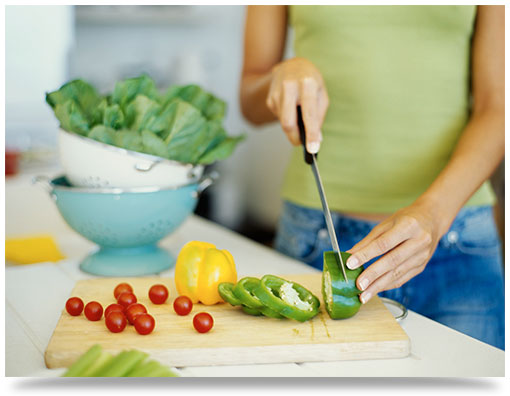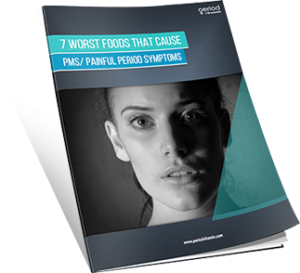For the many thousands if not hundreds of thousands of women worldwide who suffer through a wide variety of premenstrual syndrome symptoms every month, a cure or treatment is desperately needed.
There have been many proposed from heating pads to prescription pain medications to over the counter remedies. Perhaps though the most effective remedy for premenstrual syndrome maladies is the mineral we all need – iron.
If You Want To Find Out
 How does low Iron affect menstrual cycle and what is the benefit of taking it then?
How does low Iron affect menstrual cycle and what is the benefit of taking it then?
What is the effect of iron deficiency on women during their menstrual cycle?
Is it a myth or a truth that women lose iron during their cycle due to bleeding and this leads to fatigue and other pms symptoms?
Should you take iron supplements during or before your period starts and how much iron should be taken during your period?
Will taking iron reduce the heavy bleeding some women experience during their menstrual cycle?
If iron deficiency is a factor in pms, what are the symptoms that would indicate to a woman that the issue is iron and not something else like calcium or magnesium?
All these questions and more have followed women for centuries as they strive to find a cure or treatment for their almost never ending premenstrual syndrome symptoms.
What kind of symptoms do women suffering from pms experience?
There are a multitude including back pain, cramping, headaches and migraines, bloating and fluid retention, fatigue, insomnia, tender and sore breasts, acne, lowered sexual desire, heavy and irregular blood flows, vomiting, mood swings including depression and anxiety, irritability and loss of appetite as well as cravings for specific foods.
 Can iron help to treat these symptoms and if so which ones? Are there any studies that show the efficacy and potency of iron in the fight against pms?
Can iron help to treat these symptoms and if so which ones? Are there any studies that show the efficacy and potency of iron in the fight against pms?
The answer is yes iron makes a big difference and yes there are studies to prove it. Published in the American Journal of Epidemiology recently were the results of a new study.
“After tracking the diets of over 3,000 women for 10 years, researchers found that participants with the highest dietary iron intake were 30% less likely to suffer PMS than women whose diets contained the smallest quantities of the mineral iron.” prevention.com/health/healthy-living/pms-and-iron-deficiency
That is a pretty impressive statistic – this is a long term study – ten years – with a good subject size of 3000 and the result being at least one third are aided by iron consumption. There have not been many studies of this length and with this large subject size to lend credibility to the findings.
So how and why does iron help with pms? How much iron should a woman get and is a supplement needed or can you get enough from dietary iron? What symptoms are helped by this influx of iron?
We all think of blood when we think of the function of iron in the human body. Without iron we become anemic and our red blood cells do not grow and function correctly. This usually results in extreme fatigue and this is no different during the menstrual cycle. However, just as many of us are unaware of the role iron plays in the formation of melatonin in the body. This is an important consideration in combating pms since melatonin plays the role of stabilizing mood swings and fighting depression during pms.
Melatonin is a hormone and as such its production varies greatly during the menstrual cycle as do all the hormones in a woman’s body. Study author Elizabeth Bertone-Johnson, ScD, an associate professor at the University of Massachusetts Amherst, noted that large amounts of iron are not needed.
“The point at which we saw significant benefit was just above the recommended daily allowance,” Bertone-Johnson says.” prevention.com/health/healthy-living/pms-and-iron-deficiency
“Researchers at the University of Massachusetts at Amherst found that women with an iron intake of more than 20 milligrams a day had about a 35 percent lower risk of being diagnosed with PMS than women who had the lowest iron intake, about 10 mg a day. To get the higher amount, a woman would only have to eat one cup of iron-fortified cereal, which typically contains about 24 mg of the mineral.” foxnews.com/health/2013/02/26/iron-and-zinc-may-prevent-pms/
“For the new study, the researchers limited their analysis to PMS in which symptoms such as breast tenderness, bloating, depression and anxiety are so severe they “substantially impair life activities and social relationships.” That type of PMS affects between 8 percent and 15 percent of U.S. women, they write in the American Journal of Epidemiology. Overall, eating a diet that provided about 22 mg of iron every day was linked to a 33 percent decrease in a woman’s risk of developing PMS during those 10 years, compared to the women who ate the least amount of iron – about 10 mg.”
So if iron can help with pms induced fatigue, cramping, bloating and mood swings – how should that iron be ingested? If you only need a small amount above the RDA (Recommended Daily Allowance) does it matter if you get that from a piece of red meat or a big bowl of spinach?
The answer is yes. It does matter.
 Some forms of dietary iron are not the same as other forms and some are more effective than others.
Some forms of dietary iron are not the same as other forms and some are more effective than others.
It has been found that iron from supplements and iron from the leafy green vegetables and plants – known as non-heme iron – is best for treating the iron deficiency caused symptoms of pms. Heme iron which comes from animal sources is not nearly as effective.
However it is possible to get too much of a good thing so don’t overdue the iron in order to counteract the premenstrual syndrome symptoms. Especially do not try to get too much iron from red meat in particular as it will increase your bad cholesterol levels.
The RDA (Recommended Daily Allowance) is:
“Females between the age of 14 and 18 have an RDA for iron of 15 mg daily. Lactating women in this age group require 10 mg daily. From the age of 19 to the age of 50, a woman requires 18 mg or iron daily, unless she is lactating, in which case she requires 9 mg daily. Pregnant women of all ages have an RDA for iron of 27 mg per day.” livestrong.com/article/498795-what-is-the-rda-for-iron/
“Finally, know that there are other nutrients that can help—or hurt—your battle against PMS. Previous research has shown that high intakes of calcium, vitamin D, and the B vitamins thiamin and riboflavin can have a positive effect. But steer clear of getting too much potassium, since taking in more than 3.7 g actually ups your risk of PMS symptoms, Bertone-Johnson and her co-authors report in the study.”
prevention.com/health/healthy-living/pms-and-iron-deficiency
So for most women the dose for combating pms syndromes is slightly higher than the 15mg daily RDA – usually around 18 mg per day.
But when you look at the paragraph above about the RDA for iron you see that it might be a little difficult to be sure you are getting the right amount – and not too much – of dietary iron.
Because of this and because iron like so many other minerals, herbs and vitamins works better in conjunction with other vitamins, minerals and herbs, it is best to use a supplement like Period Vitamin.
Period Vitamin contains a variety of minerals, herbs and vitamins to combat the myriad symptoms of pms. It is known to be able to reduce and in some cases effectively eliminate some if not all of the multiple symptoms of premenstrual syndrome. This includes symptoms such as inflammations that cause joint and back pain. This inflammation is usually caused by the excess production of prostaglandins during the menstrual cycle.
Other symptoms treated by Period Vitamin include bloating, cramping, fatigue, insomnia, and moodiness including depression, anxiety and irritability.
Why is Period Vitamin so effective against these pms symptoms and why is it better than just an iron supplement?
These are good questions with good answers as a compound like Period Vitamin will insure that you are getting the right dose of iron daily and on a consistent basis.
In addition to the correct dose of iron, Period Vitamin contains herbs, minerals and vitamins that combat other pms symptoms as well. Period Vitamin contains chaste berry to regulate the balance of estrogen and progesterone, Evening Primrose Oil (EPO) to treat depression, cramping, tender breasts and irritability. The B vitamin complex in Period Vitamin helps to regulate the menstrual blood flow, alleviate cramping, irritability, vomiting and loss of appetite.
There is calcium and magnesium in period vitamin assisted by Vitamin D and Vitamin K to produce the most effective use of these minerals. Calcium assists with treating bloat and abdominal cramps and magnesium helps the body absorb the calcium.
Just take one Period Vitamin tablet daily and the eight herbs, three minerals and nine vitamins it contains will go to work immediately to address the symptoms of premenstrual syndrome. Period Vitamin is an easy and affordable means for almost all women to counter the effects of the ever present menstrual cycle.


